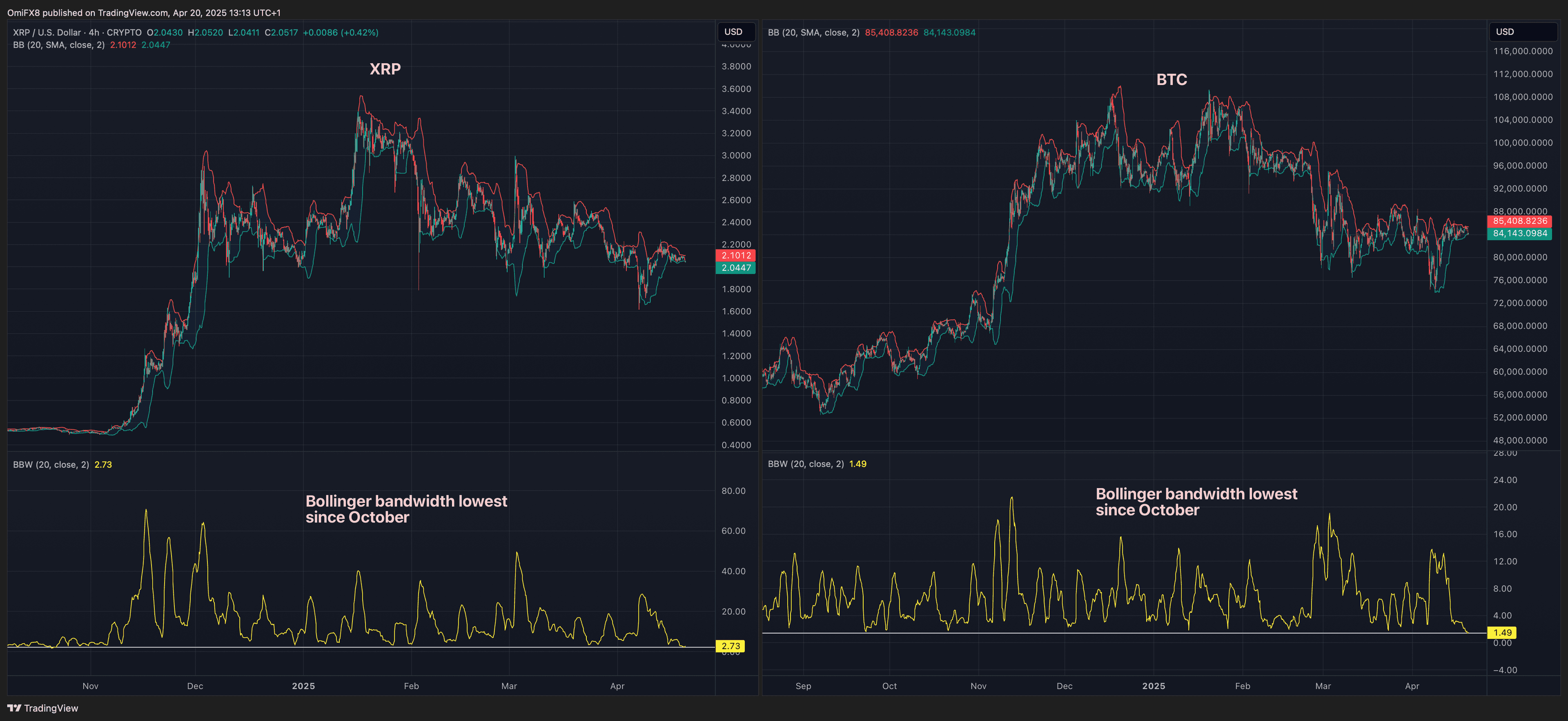XRP Resembles a Compressed Spring Poised for a Significant Price Move as Key Volatility Indicator Mirrors 2024 Patterns

The price action for XRP and bitcoin (BTC) resembles a tightly compressed spring on the verge of uncoiling with a sudden release of energy.
That’s the message from a key volatility indicator called Bollinger Bandwidth. Bollinger Bands are volatility bands set at plus two and minus two standard deviations above and below the 20-period moving average (SMA) of an asset’s market price. The bandwidth measures the space between these bands as a percentage of the 20-day moving average.
In the case of XRP, the Bollinger bandwidth has narrowed to its lowest level since October 2024 on the 4-hour chart, where each candle represents price action for a four-hour period. The 4-hour chart interval is quite popular in the 24/7 crypto market, allowing traders to analyze and predict short-term price movements. Bitcoin’s 4-hour chart mirrors the Bollinger bandwidth pattern in XRP.
The long-held belief is that tighter Bollinger bandwidth, reflecting a quiet period in the market, is akin to a compressed spring ready for significant movement.
During these calm phases, the market accumulates energy that is eventually released evvel a clear direction is established, often leading to dramatic rallies or sharp price declines/ Both XRP and bitcoin surged in November-December following an extended range-bound period that left their bandwidth at levels comparable to those observed today.
That said, tighter bands do not always indicate a bullish volatility explosion; they can also foreshadow a sell-off. For example, the bands tightened in October 2022, signaling a significant move ahead, which materialized on the downside after FTX went bust.
It remains to be seen whether this latest spring compression will trigger bullish volatility or lead both tokens into a tailspin. The recent hawkish comments from Federal Reserve’s Chairman Jerome Powell and selling by some whales favor the latter.
Stay alert!






